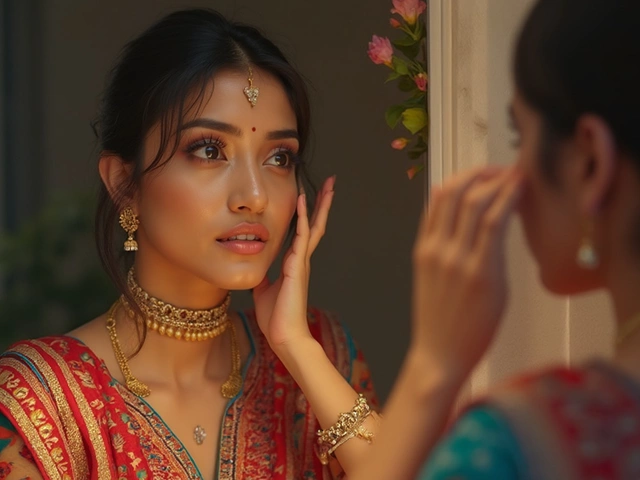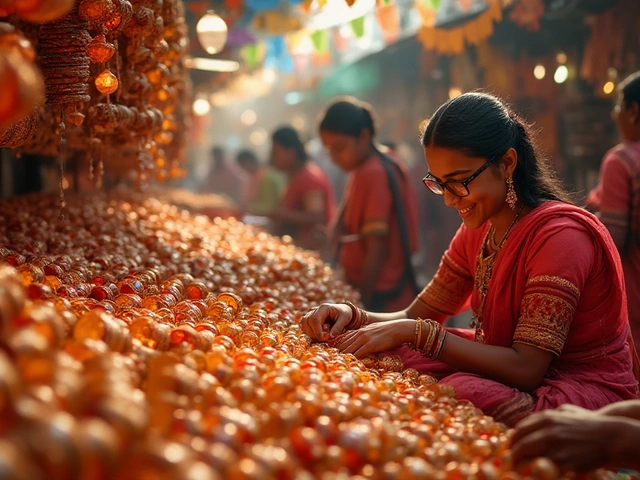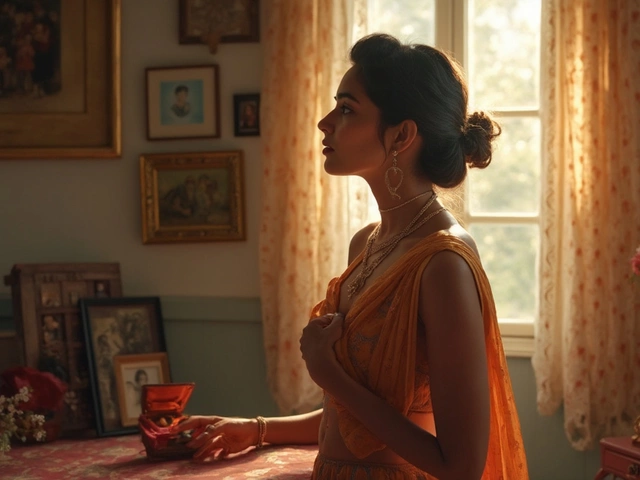
Gold isn’t just gold anymore. When you walk into a jewelry store, you’ll see gold in yellow, white, rose, and even funky mixes like green or black gold. Each color comes from blending pure gold with different metals. Pick yellow gold, and you’re going classic. Go for white gold, and you’re choosing a modern twist. Rose gold leans romantic and trendy. But which one’s really taking the lead right now?
Here’s the thing: what’s popular in one city might be totally different across the globe or even in the next neighborhood. Some folks swear by that timeless yellow gold—it’s hard to beat those warm tones if you’re looking for something that screams tradition. Others are waving the flag for white gold, especially with engagement rings or sleek, everyday pieces. If you’re not sure what to choose, knowing the basics helps you find a style that you’ll actually love to wear, and that won’t look dated in a couple of years.
- Gold Colors: What Are the Options?
- Why Yellow Gold Still Shines
- White Gold’s Rise in Modern Style
- Rose Gold and Newer Trends
- How to Pick the Right Gold Color for You
Gold Colors: What Are the Options?
Most people think of gold as just yellow, but jewelry stores stock a whole spectrum. What you’re seeing isn’t just pure gold—gold’s too soft in its natural state for everyday wear, so it’s mixed with other metals to make it tougher and give it different shades. Here’s the breakdown of what you’ll find on the shelves:
- Yellow gold: This is the classic look. It gets that warm shine from mixing pure gold with metals like copper and zinc. The higher the karat (like 22K or 18K), the richer and more intense the yellow.
- White gold: Not really white, but a pale silver tone, this type comes from mixing gold with metals like nickel, palladium, or platinum. Most white gold jewelry also gets a rhodium plating for extra shine and to keep it from fading or yellowing.
- Rose gold: Super popular in recent years, this pink-gold is made by blending gold with a higher amount of copper. The more copper, the deeper the blush color. Some people even call it red gold when it looks a bit more intense.
- Other blends: You might spot green gold (gold mixed with silver) or even black gold (gold with a special finish or alloy). These are rarer, but they’re out there for anyone wanting something less typical.
It’s not just about looks; the metal mix changes how strong the jewelry is and how much it costs. For example, higher karat yellow gold feels softer and gets scratched easier, while white and rose gold alloys add toughness. If you have allergies, check what metals are in your gold, especially with white gold, since some folks react to nickel.
So next time you’re browsing gold jewellery, you’ll know exactly what those different colors mean—and how to figure out which one fits your vibe and your lifestyle.
Why Yellow Gold Still Shines
Yellow gold isn’t just a classic—it’s pretty much the original when it comes to gold jewellery. You’ll find yellow gold used for royal crowns, ancient coins, and timeless wedding bands. In many cultures, yellow gold is still the go-to pick for big events and family heirlooms. It has this warm glow that just screams rich and familiar, and that’s tough to beat if you want your jewelry to stand out.
Yellow gold owes its color to the high percentage of pure gold (usually 22K or 18K) mixed with a touch of copper or silver. This mix gives it durability without taking away from its signature look. Since pure gold is pretty soft, it’s important for jewelry makers to blend in other metals so you can actually wear your pieces every day.
Another big reason people keep coming back to yellow gold: it works for pretty much any skin tone. The warmness of yellow gold tends to look flattering whether you’re fair, olive, or dark-skinned. That kind of versatility means you don’t have to obsess over matching your jewelry to your wardrobe.
Fun fact—lots of vintage and antique pieces are in yellow gold, so if you’re shopping for something with history or resale value, this is the color to scout for. Plus, yellow gold is less likely to need regular rhodium plating like white gold does, so upkeep is easier and cheaper in the long run.
- If you want jewelry that holds its value, yellow gold has a long track record.
- It’s super easy to repair or resize, since most jewelers are used to working with it.
- Great for statement pieces, like bold chains and chunky rings.
Yellow gold may ebb and flow in the trend charts, but it never really goes out of style. It’s the gold you can count on, whether you’re into modern looks or family traditions.
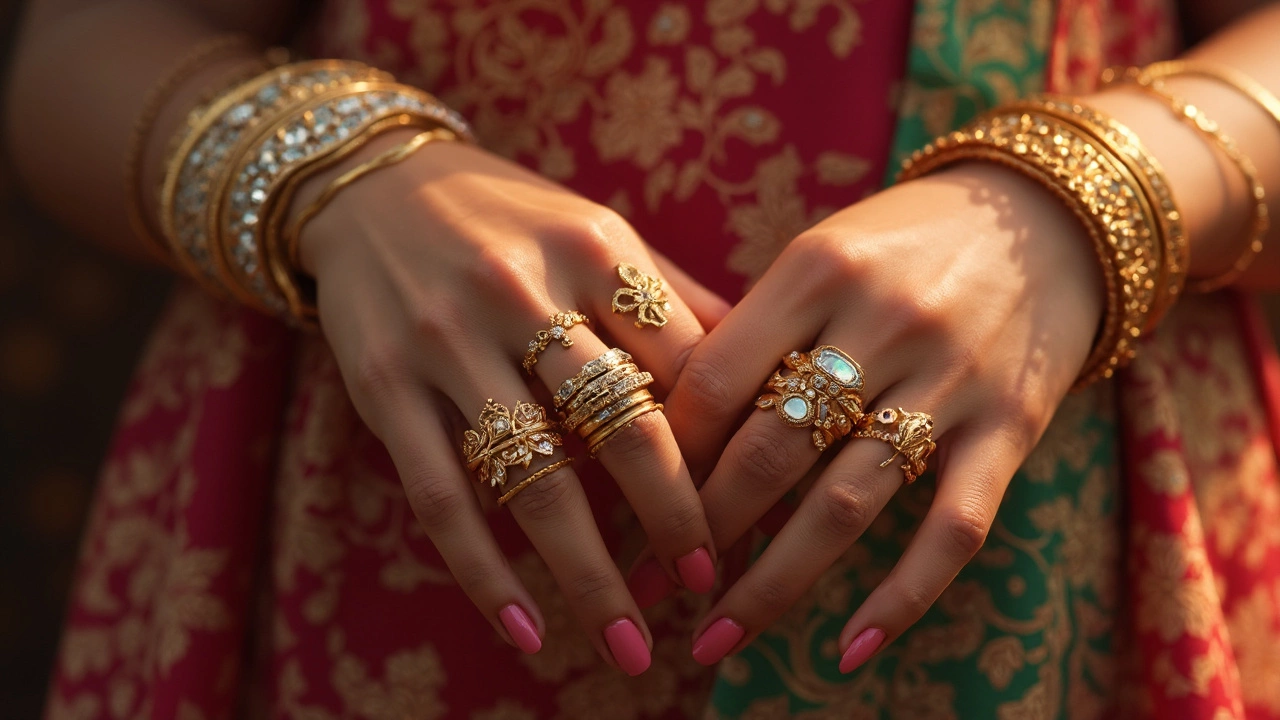
White Gold’s Rise in Modern Style
White gold packs a punch in today’s jewellery scene. It’s not actually pure gold—jewelers mix gold with metals like palladium or nickel, then usually coat it with rhodium. This gives it that bright, mirror-like shine people mistake for platinum, but without the heavy price tag. That’s a big reason younger buyers are grabbing up white gold for everything from engagement rings to simple chains.
If you dig a more understated, modern look, white gold is right up your alley. It matches almost any outfit and doesn’t look out of place at work or a night out. Plus, if you’re after diamonds or colored gems, white gold really shows off the sparkle. Here’s a cool fact: about 43% of all engagement rings sold in the U.S. in 2024 were white gold, according to a well-known jewellery report. That’s a massive jump from two decades ago when yellow gold ruled the market.
| Year | U.S. Engagement Rings in White Gold (%) |
|---|---|
| 2000 | 22% |
| 2010 | 37% |
| 2024 | 43% |
But it isn’t just America. White gold is big in Europe and Australia too, especially with wedding bands. People like how it looks like platinum—you get the luxe vibe, but you save money. Still, it pays to remember white gold needs some care. That rhodium layer can wear off after a couple of years. Jewelers usually recommend a re-coating every 1-2 years, especially if you wear the piece every day.
- White gold pairs well with cool skin tones.
- It’s less likely to look “old-fashioned” compared to yellow gold.
- If you have a nickel allergy, make sure to ask for a nickel-free blend.
If you want something that ages well and still feels fresh ten years down the line, white gold is a solid bet. Just budget for the upkeep and keep it clean—it’ll always look sharp.
Rose Gold and Newer Trends
Rose gold wasn’t always the crowd favorite, but wow, it’s everywhere lately. Go back about ten years, and this pink-toned gold really started blowing up, especially with younger shoppers and anyone who wanted jewelry that felt a little less "standard." The look comes from mixing pure gold with copper, giving it that warm blush vibe that feels softer than standard yellow or white gold. Designers often call it “pink gold” or “red gold,” but it’s all basically the same idea: a gold alloy with more copper in the mix.
One big reason rose gold took over social media feeds and display cases is how it pairs with different skin tones. It doesn’t overpower pale skin, and it pops on darker skin too. Plus, it’s less flashy than traditional yellow gold, but more playful than white gold. It’s shown up in everything—rings, watches, bracelets, even smartphone finishes.
Here’s a cool stat: By early 2020, rose gold jewelry sales jumped by nearly 40% across major US retailers. A lot of this had to do with celebrity influence and the way Instagram and Pinterest made rose gold engagement rings the 'it' trend for proposals. Check out this quick snapshot on current gold color trends in jewelry sales:
| Gold Color | 2022 Market Share (%) | Popular Item |
|---|---|---|
| Yellow Gold | 45 | Traditional bangles |
| White Gold | 30 | Engagement rings |
| Rose Gold | 22 | Stackable rings |
| Other (mixed, black, etc.) | 3 | Fashion pieces |
The last few years also brought a bunch of other "new" gold colors into stores. Black gold, for example, gets its look from a special coating (usually ruthenium or rhodium). Green and blue gold are out there too, but you don’t see them much—mostly in designer or custom pieces. These aren’t the next big thing yet, but if you like to stay ahead of the crowd, there’s nothing stopping you from trying them out.
If you want your gold jewellery to actually feel current, rose gold is still hot, and these newer colors can really set you apart. But trends move fast, so pick what fits your vibe, not just what’s popping on TikTok right now.
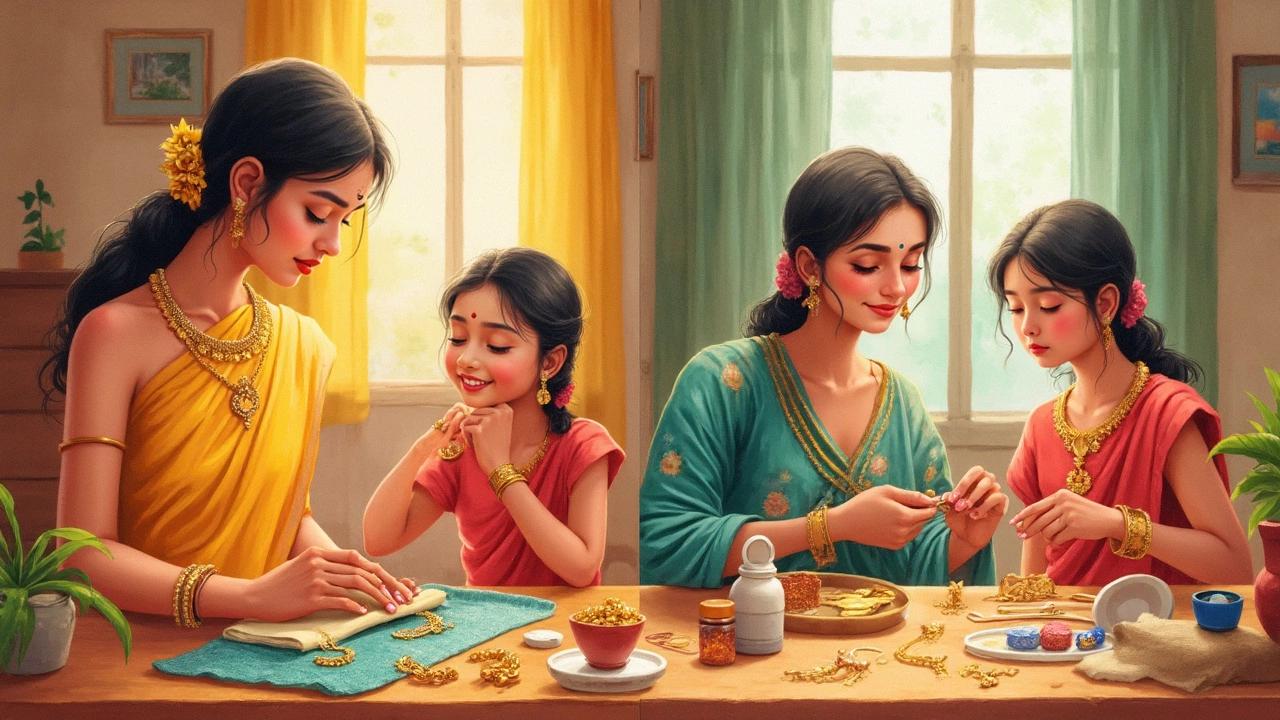
How to Pick the Right Gold Color for You
Choosing a gold color is personal, but it gets easier when you know what actually suits your skin tone, your style, and your daily life. Let’s get practical and break down what matters most.
First, your skin tone plays a big role. Here’s a quick tip: yellow gold looks best on warmer, olive, or darker skin. White gold usually pops on cooler, fair skin with pink undertones. Rose gold can go both ways but especially flatters people with neutral skin or a slight redness in the skin. There’s no law here—if you like a color, wear it. But if you care what really suits, go with these general rules.
| Skin Tone | Best Gold Color |
|---|---|
| Warm/Olive | Yellow Gold |
| Cool/Fair | White Gold |
| Neutral/Redness | Rose Gold |
Next up: personal style. If your clothes and accessories lean classic—think simple lines and timeless pieces—strong, yellow gold feels right. If you like sharp, minimalist designs or silver jewelry, white gold blends in effortlessly. Love that vintage or romantic look? Rose gold’s your friend.
Don’t forget how you actually wear your jewelry. Do you keep pieces on all day? White gold’s rhodium plating makes it pretty tough, but it will need re-plating every couple years to stay shiny. Yellow gold hides scratches better, so it works for everyday wear. Rose gold is just as durable but watch out if you have a copper allergy—rose gold contains copper.
Budget is also a factor. White gold and yellow gold are usually close in price, but white gold needs ongoing maintenance, which adds to the cost. Rose gold is often a bit more affordable since copper (the metal used) is cheaper.
- Match gold color to your skin undertone for a natural fit.
- Choose based on what you already own—mixing metals looks great, but matching simplifies things.
- Factor in how much wear and tear the piece will get.
- Check if you have metal allergies—nickel in white gold or copper in rose gold can cause issues for some people.
Your choice should make you feel comfortable and confident. Try the piece on, stand in good light, and trust what you see in the mirror. The most popular gold jewellery color is the one that feels right on you, not just on the display rack.
